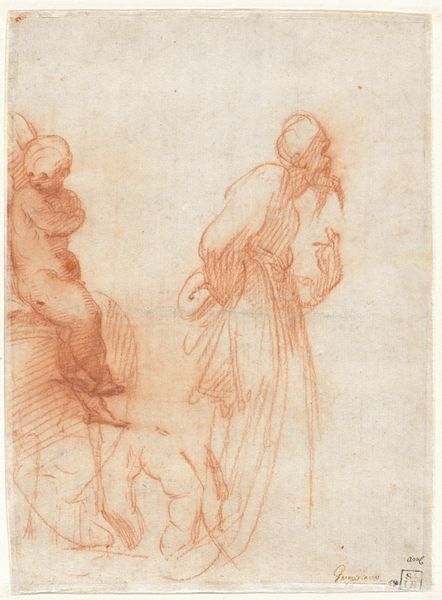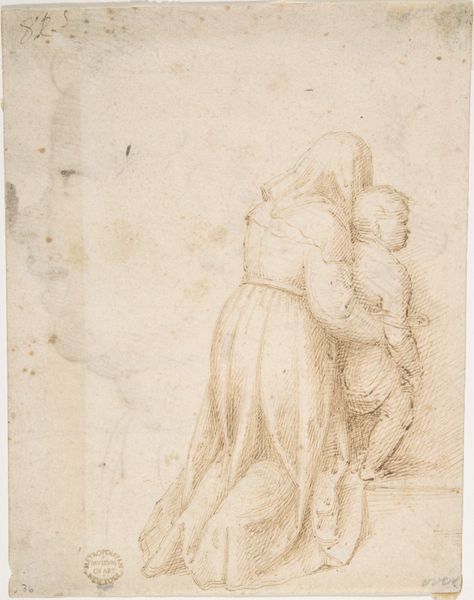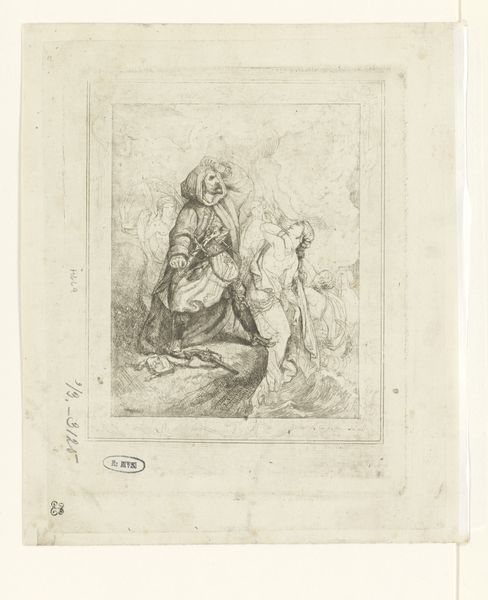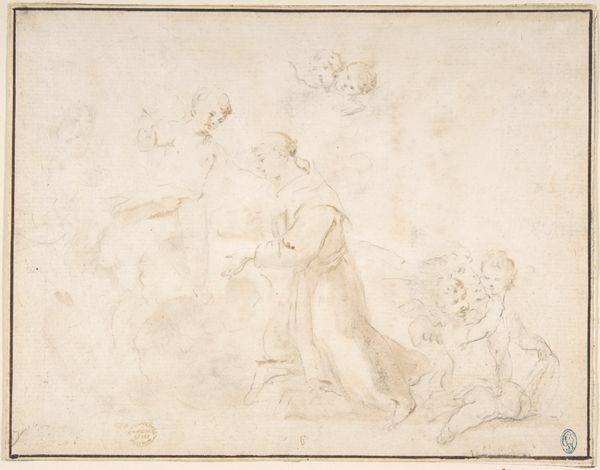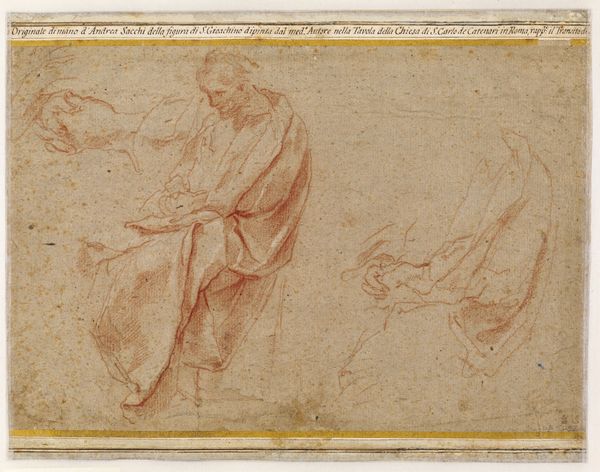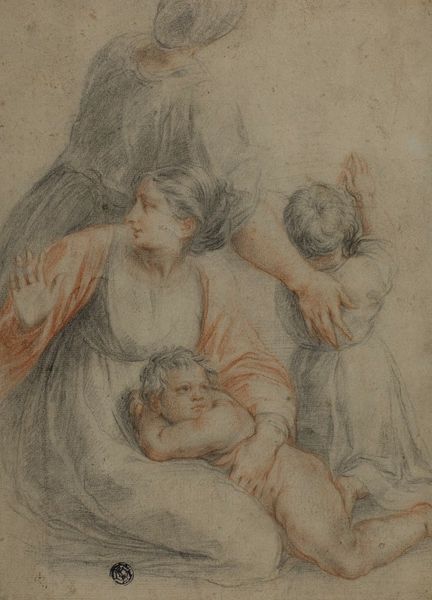
drawing, print, ink, pen
#
portrait
#
drawing
# print
#
charcoal drawing
#
figuration
#
ink
#
pen
#
italian-renaissance
Dimensions: 1-9/16 x 2-1/16 in. (4.0 x 5.3 cm)
Copyright: Public Domain
Curator: Here we have Francesco Allegrini’s “Mother and Child,” a work likely created sometime between 1624 and 1663, rendered with pen and ink. Editor: My initial response is one of intimacy. The figures, though sketched with seemingly quick, simple lines, convey such tenderness in the mother’s gaze. Curator: Absolutely, the iconography of the mother and child is deeply ingrained in Western art and often linked to depictions of the Madonna and Child, emphasizing themes of divine love and the sanctity of motherhood, ideas heavily circulating and celebrated through Europe during Allegrini's lifetime. How the public engages with those tropes here would certainly shape the painting's overall reception. Editor: The dynamism achieved with such economical means is striking. Notice the convergence of lines drawing our eyes to the child's face and its gesture toward the mother's hand, underscoring that powerful connection. Even the hatching of the garments, done with varying density, directs light and form, creating a sculptural effect within the two-dimensional plane. Curator: And that is certainly purposeful, reflecting back to the social emphasis placed on maternal roles, where motherhood and piety were essentially the gold standard for women of this time, and therefore a highly marketable commodity for Allegrini's patrons. One wonders to what extent the formal beauty amplifies the intended message. Editor: One could even read a sense of Baroque dynamism into it; though only suggested, the scene implies movement and energy typical of that period, achieved largely through that directional penmanship. The contrast created by light and dark tones against the background helps provide a striking image. Curator: Considering its accessibility via prints, such imagery also allowed the church to reach wider audiences and encourage specific roles within the public sphere. These artistic representations served as tools to shape the domestic lives of the faithful, influencing how family relationships were valued and enacted within the broader culture. Editor: Thinking about it now, the simple composition further adds to the emotion of the figures in the foreground, helping them to more strongly emanate universal connection and familiarity across different viewing eras. Curator: True, seeing Allegrini’s piece within the Met provides an opportunity to reflect on not only the artistry itself, but also its original intention as a cultural artifact, designed to interact with a complex social reality. Editor: Indeed, studying its composition, media, and how that speaks to universal experience reminds us about our human connection as a collective.
Comments
No comments
Be the first to comment and join the conversation on the ultimate creative platform.

